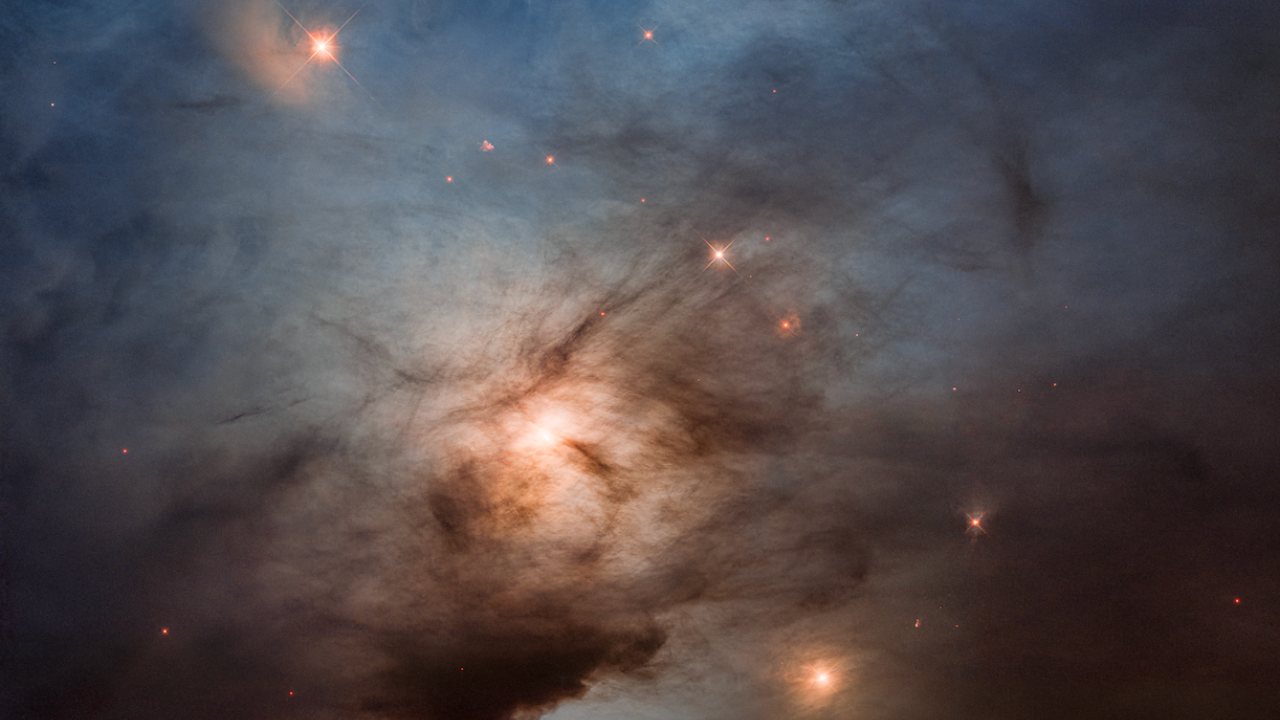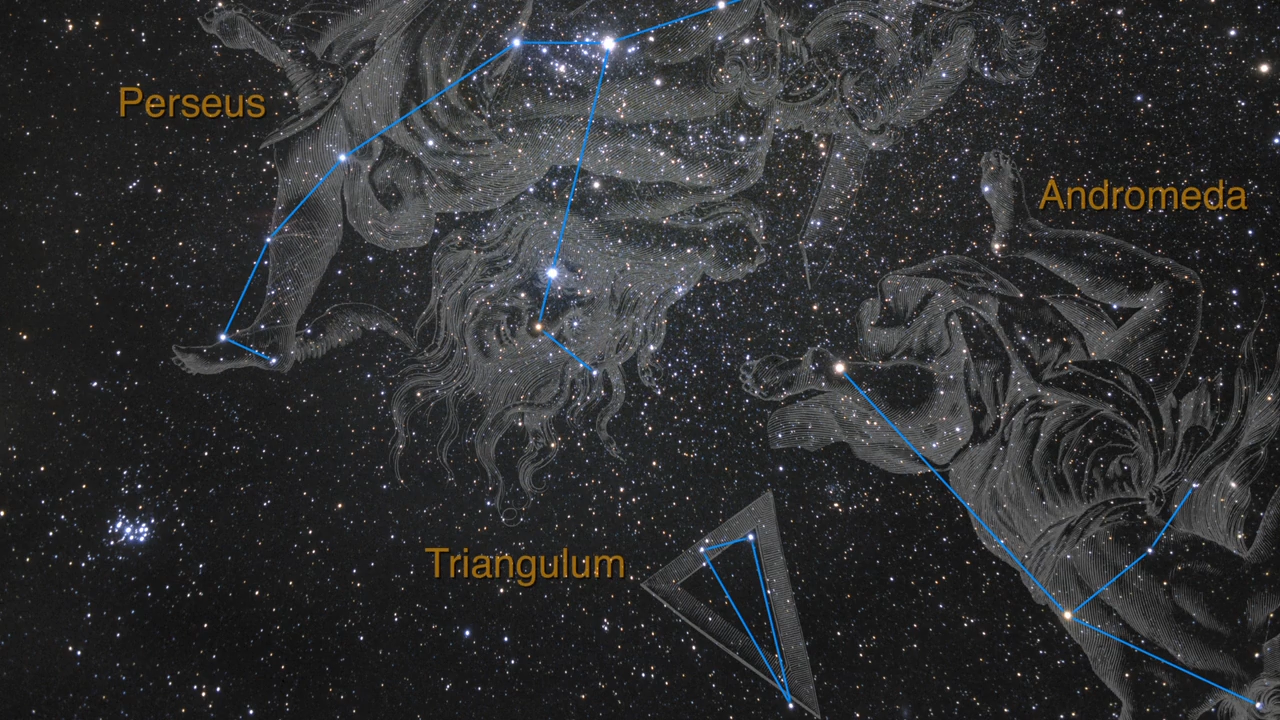1 min read
NGC 1333 (Compass Image)

This is a compass graphic for the star-forming region NGC 1333. The left half is a color image of NGC 1333 labeled “NGC 1333, HST WFC3/UVIS”. Four filter labels are in blue (F475W), green (F606W), and red (F657N H-alpha plus NII, and F814W). At bottom a scale bar is labeled 0.2 light-years and 43 arcseconds. The right half shows four black-and-white panels in a two-by-two layout. Each panel is a view of NGC 1333 in an individual filter. At top left is F475W; at top right is F606W; at bottom left is F657N; at bottom right is F814W.
About the Object
- R.A. PositionR.A. PositionRight ascension – analogous to longitude – is one component of an object's position.03:29:11.3
- Dec. PositionDec. PositionDeclination – analogous to latitude – is one component of an object's position.+31:18:36
- ConstellationConstellationOne of 88 recognized regions of the celestial sphere in which the object appears.Perseus
- DistanceDistanceThe physical distance from Earth to the astronomical object. Distances within our solar system are usually measured in Astronomical Units (AU). Distances between stars are usually measured in light-years. Interstellar distances can also be measured in parsecs.967 light-years
- DimensionsDimensionsThe physical size of the object or the apparent angle it subtends on the sky.Image is about 5.0 wide by 7.6 arcmin tall (about 1.4 by 2.1 light-years)
About the Data
- Data DescriptionData DescriptionProposal: A description of the observations, their scientific justification, and the links to the data available in the science archive.
Science Team: The astronomers who planned the observations and analyzed the data. "PI" refers to the Principal Investigator.The HST observations include those from program 17266 (C. Britt)
- InstrumentInstrumentThe science instrument used to produce the data.WFC3/UVIS
- Exposure DatesExposure DatesThe date(s) that the telescope made its observations and the total exposure time.December 2022 to March 2023
- FiltersFiltersThe camera filters that were used in the science observations.F475W, F606W, F657N, F814W
- Object NameObject NameA name or catalog number that astronomers use to identify an astronomical object.NGC 1333
- Object DescriptionObject DescriptionThe type of astronomical object.Reflection Nebula
- Release DateApril 20, 2023
- Science ReleaseHubble Celebrates 33rd Anniversary with a Peek into Nearby Star-Forming Region
- CreditNASA, ESA, STScI; Image Processing: Varun Bajaj (STScI), Joseph DePasquale (STScI), Jennifer Mack (STScI)

These images are a composite of separate exposures acquired by the WFC3 instrument on the Hubble Space Telescope. Several filters were used to sample wide and narrow wavelength ranges. The color results from assigning different hues (colors) to each monochromatic (grayscale) image associated with an individual filter. In this case, the assigned colors are: Blue: F475W, Green: F606W, Red: F657N and F814W
Related Images & Videos

Take a Tour of NGC 1333
This is a video tour of the nebula NGC 1333 that lies on the edge of a gigantic dark cloud of cold molecular hydrogen laced with soot-like dust. This raw material fuels a firestorm of star birth taking place inside the dusty cocoon. Parts of it have broken through the veil of...
Share
Details
Claire Andreoli
NASA’s Goddard Space Flight Center
Greenbelt, Maryland
claire.andreoli@nasa.gov
NASA, ESA, STScI
Varun Bajaj (STScI), Joseph DePasquale (STScI), Jennifer Mack (STScI)






























